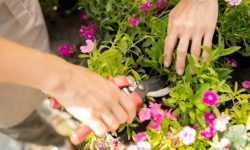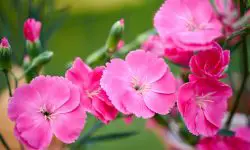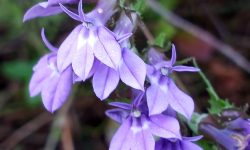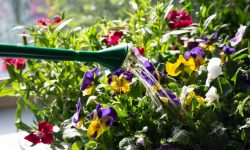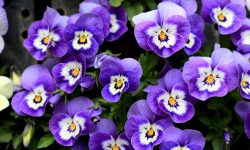Blue Vervain, with its tall, slender spikes crowned by delicate purple-blue flowers, is more than just a garden plant—it is a symbol of resilience and natural charm. Blooming throughout summer, it attracts butterflies, bees, and other pollinators, bringing life and movement into any landscape. Its presence adds a wild yet graceful touch, turning ordinary spaces into vibrant displays of seasonal beauty.
Caring for Blue Vervain may seem simple, but understanding its unique needs is the key to long-lasting success. From soil preparation and watering routines to pruning and seasonal care, every step influences how well it thrives. With the right approach, this hardy perennial will reward you with waves of color and an ecological boost for your garden. Let’s explore how to nurture Blue Vervain for maximum beauty all season.
Understanding about Blue Vervain
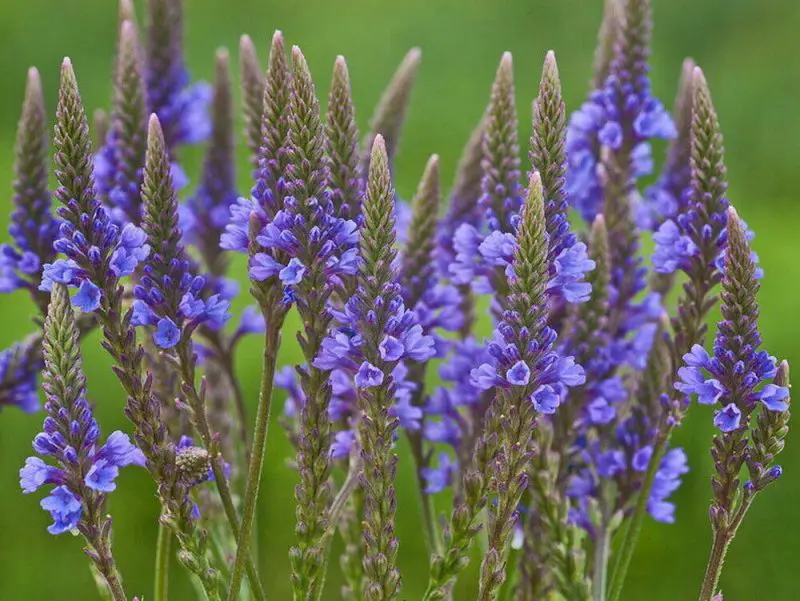
Blue Vervain, scientifically known as Verbena hastata, is a hardy perennial native to North America. It thrives in moist, well-drained soils, often found in meadows, stream banks, and wetlands. Recognizable by its tall, slender stems and striking spikes of purple-blue flowers, it blooms throughout summer, attracting a wide range of pollinators including bees, butterflies, and hummingbirds. Its upright growth habit and graceful flowering make it a versatile choice for naturalistic gardens, wildlife habitats, and mixed perennial beds.
The plant’s ecological role extends beyond aesthetics. Blue Vervain provides essential nectar and pollen for pollinators, supporting local biodiversity. Its seeds offer food for birds, while the dense foliage offers shelter for beneficial insects. This makes it not only a visually appealing addition but also a functional one that contributes to a healthy garden ecosystem. Understanding these ecological interactions allows gardeners to plan more sustainable and vibrant landscapes that encourage wildlife activity.
From a gardening perspective, knowing the growth patterns and requirements of Blue Vervain is essential for long-term success. It spreads readily through self-seeding, which can be both an asset and a challenge depending on the garden setting. Recognizing its need for sunlight, consistent moisture, and occasional maintenance ensures strong stems, abundant flowering, and overall plant health. With this foundational understanding, gardeners can cultivate Blue Vervain effectively, maximizing its beauty and ecological benefits throughout the season.
Benefits of Growing Blue Vervain
Blue Vervain is celebrated for its stunning visual appeal. Its tall, slender spikes adorned with vibrant purple-blue flowers create vertical interest in garden beds, borders, and naturalistic landscapes. Blooming throughout summer, it provides a long-lasting display of color that complements a wide range of other perennials and annuals. The plant’s upright, elegant form adds structure to mixed plantings, while its ability to sway gracefully in the breeze introduces dynamic movement, enhancing the sensory experience of the garden.
Beyond aesthetics, Blue Vervain plays a crucial role in supporting pollinators. Its abundant nectar attracts bees, butterflies, and hummingbirds, making it a valuable addition to wildlife-friendly gardens. By offering a reliable food source throughout the flowering season, it encourages biodiversity and helps sustain local pollinator populations. Planting Blue Vervain alongside other nectar-rich species creates a vibrant habitat that fosters ecological balance, contributing to the health of the surrounding environment.
Additionally, Blue Vervain contributes to soil stability and erosion control in wetter areas such as stream banks and meadows. Its robust root system helps anchor soil, preventing erosion while maintaining moisture balance. The plant’s self-seeding nature also allows for naturalized growth, filling gaps in the landscape with minimal maintenance. By combining beauty with ecological functionality, Blue Vervain proves to be both an ornamental and a practical choice, offering long-term rewards for gardeners seeking sustainable, vibrant, and pollinator-friendly gardens.
Choosing the Right Location
When planting blue vervain, location is one of the most important factors for success. This plant prefers open, sunny areas where it can receive at least six hours of direct sunlight each day. Sunlight encourages strong flower spike production and helps maintain vigorous growth throughout the season. While it can tolerate partial shade, full sun is ideal if you want to maximize both blooms and plant health.
Moisture is another consideration when selecting a location. Blue vervain naturally grows in meadows, stream banks, and damp lowlands, so it thrives in areas with consistent soil moisture. Choosing a site with rich, slightly damp soil will mimic its natural habitat and promote continuous flowering. It can adapt to drier sites once established, but regular watering is essential during the first year.
Equally important is spacing. Blue vervain can grow up to five feet tall, so giving it room to spread without crowding ensures good airflow and prevents disease. Consider planting it in the background of perennial beds or along borders where its height can create visual interest without overshadowing smaller plants. Proper placement allows it to flourish while adding structural beauty to your garden design.
Soil Preparation for Healthy Growth
Healthy soil forms the foundation for thriving blue vervain plants. This species prefers soil that is fertile, moist, and slightly acidic to neutral in pH. Preparing the ground before planting ensures that roots can establish deeply and access the nutrients they need for vigorous growth. Mixing compost or well-rotted organic matter into the soil enhances fertility and structure, improving both drainage and water retention.
Blue vervain’s natural environment often features loamy or clay-based soils that hold moisture but still allow airflow around the roots. Amending sandy soils with compost can help retain water, while incorporating organic matter into heavy clay can improve drainage. A balanced soil environment prevents stress on the plant and supports strong flowering performance throughout the summer months.
Testing soil pH and nutrient levels before planting can provide valuable insights. If your soil is too alkaline, adding elemental sulfur can help adjust pH. Likewise, a general-purpose organic fertilizer can supply essential nutrients during the establishment phase. By starting with a well-prepared soil bed, you give blue vervain the best conditions to grow tall, healthy, and covered with blooms all season long.
Watering Needs Throughout the Season
Blue vervain has a preference for consistently moist soil, making watering one of the most important aspects of its care. During the establishment period, it requires regular watering to help roots grow deep and strong. Once established, it can tolerate short dry periods, but prolonged drought will reduce flowering and may stress the plant. Maintaining even moisture ensures lush foliage and a steady display of flower spikes.
A deep soaking method works best for blue vervain. Rather than frequent shallow watering, aim to water less often but more thoroughly, allowing moisture to penetrate into the root zone. This encourages stronger root systems and reduces the risk of weak, shallow roots. Mulching around the base of the plant with organic material also helps retain soil moisture while regulating soil temperature.
Seasonal adjustments are necessary to match changing weather patterns. In hot, dry summers, water more frequently to compensate for increased evaporation. In cooler, wetter months, reduce watering to prevent oversaturation, which can lead to root problems. Monitoring soil conditions and adjusting your watering schedule accordingly will keep blue vervain healthy and in bloom for months on end.
Fertilizing Blue Vervain for Strong Blooms
Fertilization plays a key role in supporting blue vervain’s growth and flower production. Although this native perennial is not overly demanding, providing the right nutrients ensures robust development and long-lasting blooms. A balanced, slow-release fertilizer applied in spring as new growth emerges sets the stage for a productive season. Organic options such as composted manure or fish emulsion also work well to boost soil fertility naturally.
Nitrogen encourages leafy growth, but too much can reduce flower production, so it’s important to maintain balance. A fertilizer with a slightly higher phosphorus content supports abundant flower spikes, while potassium strengthens the plant overall. Feeding blue vervain with a mild application every six to eight weeks during the growing season helps sustain continuous flowering.
Gardeners should avoid over-fertilizing, as this can lead to leggy growth and fewer flowers. Blue vervain naturally thrives in moderately fertile soils, and too much nutrient input can disrupt its natural balance. Instead, focus on building healthy soil through organic matter and supplement only when needed. With proper fertilization, you can enjoy tall, healthy plants covered with vibrant blue blooms from summer into fall.
Pruning and Deadheading Techniques
Pruning and deadheading are essential practices for maintaining blue vervain’s appearance and encouraging prolonged blooming. Deadheading, or removing spent flower spikes, redirects the plant’s energy from seed production back into generating new blooms. Regular deadheading throughout the summer keeps the plant looking fresh and extends the flowering season significantly.
Pruning blue vervain also helps manage its height and encourages bushier growth. While the plant can grow tall and upright, lightly cutting back some stems after the first flush of flowers stimulates side branching and additional flower spikes. This technique not only increases bloom production but also creates a fuller, more attractive plant shape.
At the end of the season, once flowering has finished, cutting the plant back to the ground helps prepare it for winter dormancy. This practice prevents self-seeding if you do not want the plant to spread aggressively, while also reducing overwintering pests or diseases. Thoughtful pruning and deadheading ensure that blue vervain remains vibrant, productive, and beautiful year after year.
Seasonal Care Guide for Blue Vervain
Spring Care
Spring marks the beginning of Blue Vervain’s growth cycle, making it the perfect time to prepare the plant for a strong season. Start by clearing away old stems and debris left from winter to allow new shoots to emerge freely. Adding compost or organic matter enriches the soil, ensuring that nutrients are readily available as growth resumes. This preparation sets the foundation for tall, healthy stems and vibrant blooms later in the season.
Spring is also the right moment to divide older clumps if necessary. Dividing not only prevents overcrowding but also rejuvenates plants, stimulating fresh growth. Water moderately during this time, keeping the soil moist but not soggy to encourage strong root development. With careful preparation in spring, you provide Blue Vervain with the boost it needs to thrive and produce abundant flowers throughout summer.
Summer Care
During summer, Blue Vervain reaches its peak, producing tall spikes of purple-blue flowers that attract pollinators. To support this vigorous blooming stage, provide consistent watering, especially during hot or dry spells. While the plant tolerates some drought, maintaining even moisture helps prolong the flowering season. Adding mulch around the base reduces evaporation and keeps the roots cool.
Deadheading spent blooms in summer encourages the plant to focus energy on new flower spikes instead of seed production. This simple maintenance step extends the blooming period, allowing the garden to remain colorful for longer. Keep an eye out for pests like aphids or spider mites, and act quickly if infestations appear. With steady attention during summer, Blue Vervain continues to flourish, creating a dynamic and lively display in the garden.
Fall Care
As autumn arrives, Blue Vervain begins to slow its flowering and prepare for dormancy. This is the time to reduce watering gradually while still keeping the soil lightly moist. Pruning back stems to about half their height tidies the plant and helps redirect energy toward strengthening roots before winter. Removing faded flower spikes also prevents excessive self-seeding unless natural spreading is desired.
Autumn is also an excellent opportunity to enrich the soil with organic matter. Adding compost or leaf mulch around the base provides insulation for the roots and replenishes nutrients that will fuel next year’s growth. By caring for Blue Vervain in autumn, you not only maintain a neat garden appearance but also set the stage for healthy regrowth when spring returns.
Winter Care
In winter, Blue Vervain enters dormancy, and most of its above-ground growth dies back. Although hardy, it benefits from a little extra protection in colder regions. Applying a layer of mulch or straw around the root zone helps shield it from extreme frost and temperature fluctuations. This simple step preserves root health through the coldest months.
Gardeners can also leave some of the dried flower spikes standing through winter, as they add visual interest and provide food and shelter for birds. In early spring, these stems can be cleared away to make room for fresh growth. Winter care for Blue Vervain is minimal, but thoughtful protection ensures the plant emerges strong, ready to bring color and vitality back to the garden once the growing season begins again.
Common Pests and Diseases
Aphids and Other Insect Pests
Aphids are among the most frequent pests that target Blue Vervain, especially during the peak growing season. These tiny insects feed by sucking sap from stems and leaves, which weakens the plant and often causes curling or yellowing foliage. In large numbers, aphids can limit flower production and reduce the plant’s vigor. Other pests like spider mites may also appear in hot, dry weather, creating fine webbing on leaves that interferes with photosynthesis and overall health. Left unmanaged, infestations can significantly affect the plant’s performance.
To control insect pests, gardeners should inspect Blue Vervain regularly, particularly on the undersides of leaves where aphids cluster. A strong stream of water can dislodge small populations, while natural predators such as ladybugs help keep numbers down. In more persistent cases, neem oil or insecticidal soap provides effective and eco-friendly solutions. Maintaining strong plant health with proper watering and soil conditions also makes Blue Vervain less vulnerable to pests. With consistent care and timely intervention, these insect problems can be managed before they compromise the plant’s vitality and blooming season.
Fungal Diseases and Root Problems
Blue Vervain is relatively hardy, but poor growing conditions may expose it to fungal diseases and root issues. Root rot is a common concern when the plant is grown in soil that retains too much water. This disease weakens the roots, leading to stunted growth, wilting stems, and eventual plant decline. Powdery mildew is another issue, appearing as a white, powdery coating on leaves that reduces the plant’s ability to photosynthesize. Such conditions often develop in overcrowded plantings or humid environments with poor air circulation.
Preventing fungal diseases begins with choosing the right location. Plant Blue Vervain in well-drained soil and avoid excessive watering to reduce the risk of root rot. Space plants adequately to improve airflow and limit humidity around the foliage. If powdery mildew occurs, remove affected leaves and apply a fungicidal spray to stop the spread. Adding organic mulch also helps regulate soil moisture while protecting the root system. By prioritizing prevention and acting quickly when issues appear, you can safeguard Blue Vervain from fungal and root-related problems, ensuring long-term health and beautiful blooms.

